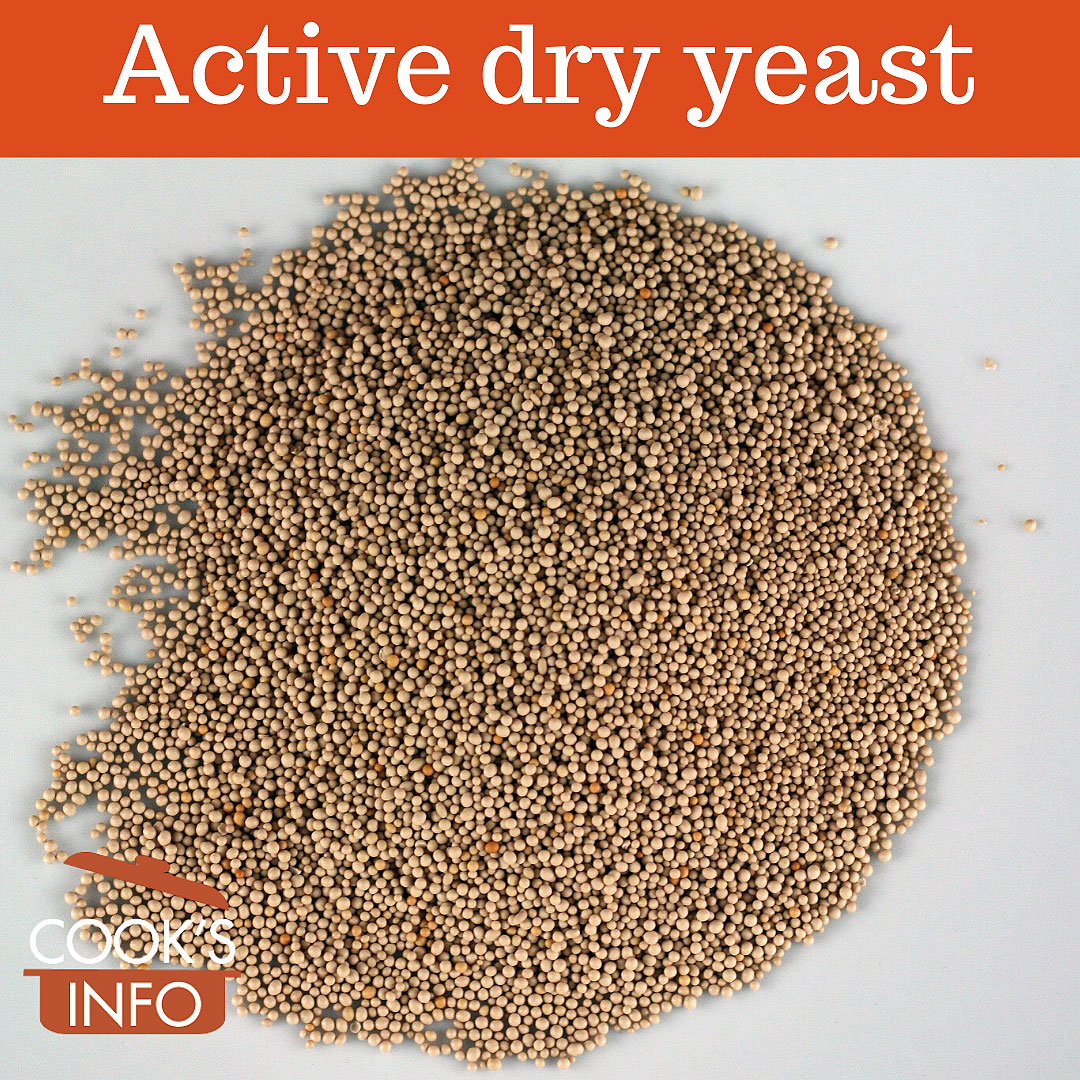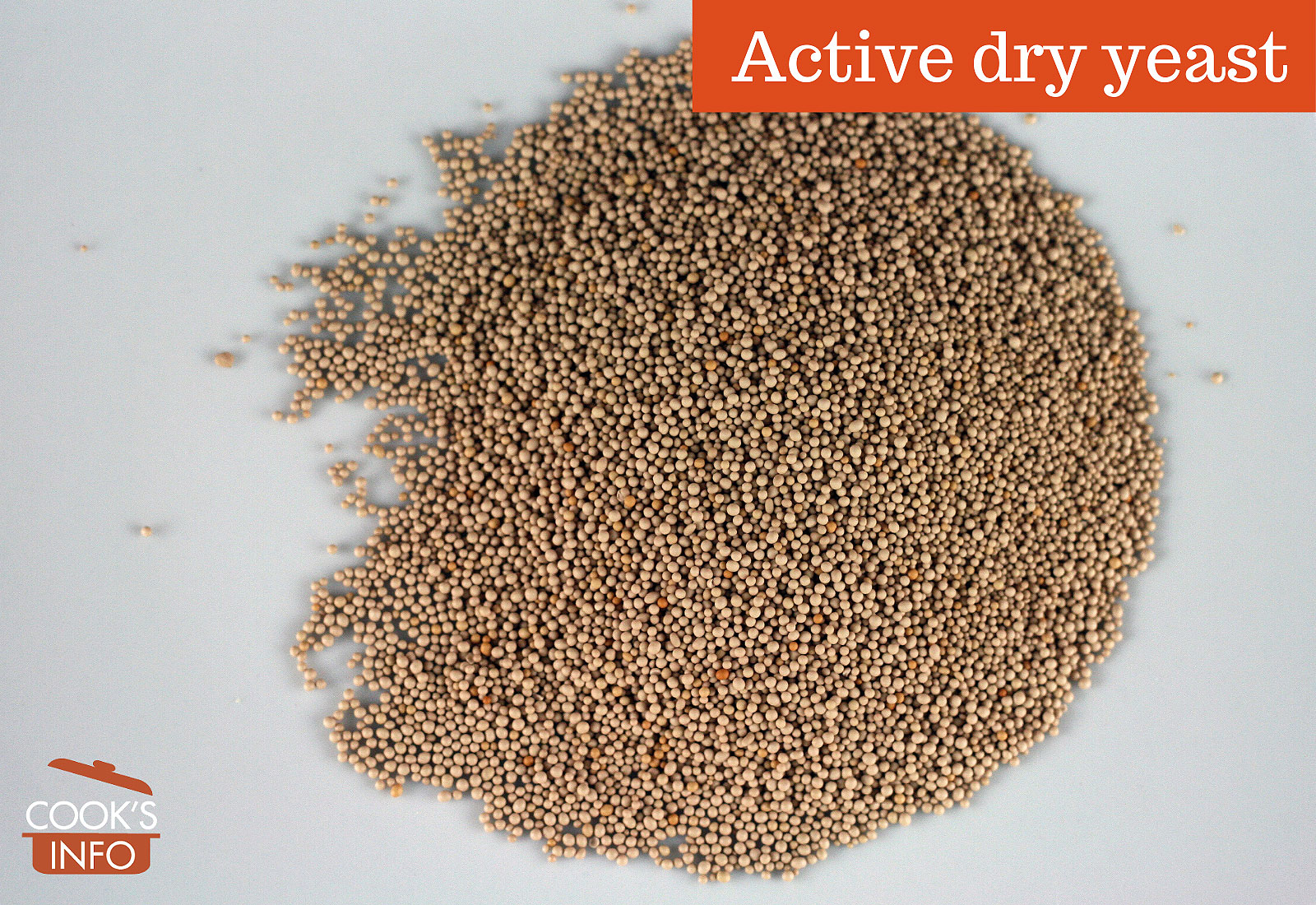
Active dry yeast. © CooksInfo / 2020
Active dry yeast is yeast cream that has been dehydrated. It is often mixed with “sorbitan monostearate” (an emulsifier), and ascorbic acid (Vitamin C.) The Vitamin C creates an acidic environment that yeast like and flourish in. It also helps to preserve the resultant baked goods a bit longer by deterring mould and bacterial growth.
The strains of yeast cream that are used for active dry yeast are those that best survive the drying and rehydrating process. Dry yeast will have only a fraction of the moisture that fresh yeast does (approximately 5% compared to 70%.)
When the yeast is rehydrated, there is always what is called a “lag phase” of 5 to 10 minutes during which the yeast slowly reactivates.
In North America, active dry yeast is usually sold in 3 separate but attached little sachets, about 8 grams each, with each package enough for one loaf of bread; or in small brown glass jars, or in tins with resealable plastic tops. In the UK, it is sold in tins with resealable plastic tops or in 7 gram sachets that come in strips of 6 or boxes of 8.
Active dry yeast compared to other dry yeasts
Many recipes written during the last half of the 1900s will call for active dry yeast, but it is being replaced in newer recipes and on store shelves by “Instant” or “Fast-Rising” yeast.
Some food writers advise not to use active dry yeast for bread machines and to use instant or bread machine yeast instead. This is true in the UK. British active dry yeast won’t work well in bread machines: it just isn’t as active as North American. There, you must indeed use the instant yeast or bread machine yeast instead. But, in Canada and US, the active dry yeast sold works very well in all bread machine recipes; Black & Decker’s recipe booklets even call for active dry yeast.
Cooking Tips
Your recipe will likely give you directions on how to rehydrate the yeast, but here’s a rule of thumb: 1 teaspoon of sugar in ¼ cup (4 tablespoons / 60 ml) of lukewarm water (water which feels just barely warm on the inside of your wrist, which should be in the range of 37 to 43 C / 100 to 110 F), then add the yeast and let it sit for 10 minutes in a warm, draft-free place without stirring. The yeast should almost double up to the ½ cup mark; if it stays at about the ¼ cup mark after 10 minutes, the yeast is no longer any good. Otherwise, give it a stir, and use in your recipe.
In bread machine recipes, there is of course no need to hydrate the yeast first. Many bread machine recipes call for the yeast to be placed in last on top of all the other ingredients.
Substitutes
Instant or bread machine yeast; also fresh yeast if not using a bread machine.
Equivalents
One package = 2 ¼ teaspoons to 1 tablespoon (depending on size of granules) = ¼ ounce = 7 or 8 grams = 1 cake compressed fresh yeast
Storage Hints
You can store active dry yeast in the cupboard until the expiration date or until 4 months after opening. The expiration date is for room temperature storage: if you keep the yeast in the fridge, it will last for up to a year after being opened. In the freezer in a tightly-sealed container or jar, its storage life is often several years.
History Notes
Dry yeast was invented during the Second World War.

Active dry yeast. © CooksInfo / 2020

